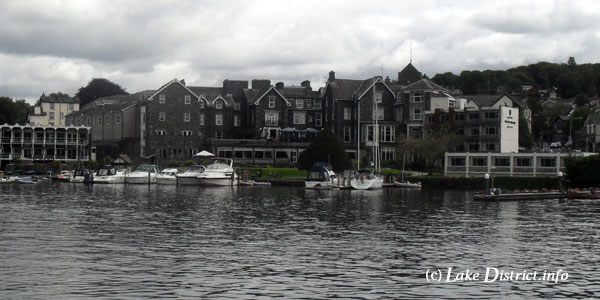
The twin towns of Bowness (technically Bowness-on-Windermere and Windermere are the most visited towns of the Lake District.
Bowness-on-Windermere is the older and more established town of the two. It is situated on the shore of Windermere lake which is over ten miles long by one mile wide. The name Windermere is believed to have been derived from a Norse name Vinand/Winand and the word mere meaning lake, so it is literally Winand's lake. As such it is a technically a mistake to use the term Lake Windermere, although it is often used.
Bowness is derived from Bulnes which literally means the headland where the bull grazes. The on Windermere was later added on the ordinance survey maps to distinguish it from other places named Bowness.
St Martins church in Bowness, is a historic building that dates from 1483, although there was some enlargement and alterations around 1870. One of it's prominent features are some beautiful stained glass including President George Washington's ancestors coat of arms. Other buildings near the church are some of the oldest in Bowness and date from when the town was a modest fishing village.
In the nineteenth century, wealthy industrialists and merchants built large houses on the shores of Windermere, in part inspired by the back to nature movement championed by Wordsworth. These large houses are now mostly converted into hotels. The Belsfield Hotel was once the home of Henry Schnieder the Barrow steelworks chairman. Bowness furher developed after the railway station was built at Windermere.
One of the main viewing points in the area is Orrest Head which is one of the first places visited by A Wainwright for his legendary guide to the Lake District.
Among the famous residents of Bowness include Beatrix Potter with the World of Beatrix Potter being one of the most popular attractions in the town.